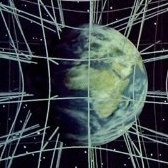Leaderboard
Popular Content
Showing content with the highest reputation on 11/18/20 in all areas
-
Get a ball'n'stick box and remake two compounds with different chirality. It will visualize you the difference. https://www.khanacademy.org/science/organic-chemistry/stereochemistry-topic/chirality-r-s-system/v/chiral-achiral-jay1 point
-
It doesn’t. The stereochemistry and how they occupy space is what matters. A good illustration of why this matters in drug design is your feet. They are mirror images of one another but nonsuperimposable in the same way enantiomers are. You will probably know from experience that if you try to put your left shoe on your right foot or vice versa, it won’t fit very well. The same is often true for chiral drug molecules and their molecular targets (eg. enzymes). In the drug world, the quintessential example of why chirality matters a lot is thalidomide, which I’ll let you look up.1 point
-
I'm not sure where exactly we disagree? You're describing the same thing as me, but simultaneously telling me my description is incorrect. Even much of what we consider matter is empty space, in fact. On a cosmic scale, there is almost nothing but a bunch of quantum foaming. If there were an external influence capable of phenomenon such as this, there is no way that it could introduce such a vast quantity of mass without an uncontrollable spike in the Higgs field's energy distribution. This would throw the Higgs field out of metastability, all the potential energy therein would cascade into kinetic energy, causing every known thing to rapidly drop to the lowest possible energy state. In a situation such as this, it would be more or less unavoidable. I don't deny that a quantum physics event such as this is unlikely to actually happen, but I've already expressed the point of this topic and its introduction of unclassified influences into existing ones. I'm not sure why you're being so aggressive; it feels like you're trying to have an argument, whereas I'm simply trying to have a fascinating discussion. If we had a specimen from each of these scenarios, they would be very similar in many ways. However, the concept behind the question involves influences of a universal scale. It's less the properties of the maximally compact matter (although that is a great topic for discussion by itself), and more about how it and the influences preceding it would effect physics as we know it. I thank you for the assistance help. It makes sense that these would be the problems; I didn't talk to many people growing up, so I learned most of my language habits from the science I read, making it pretty easy (especially in a scientific setting) to speak without simplifying.1 point
-
1 point
-
As am I! I've a few historical ones of myself to suggest in the future. Yes, the treatment worked wonders. Turned out all I had to do was try to bathe in a field of cacti and listen to Dostoyevsky insult me five or six times a sentence. Half-True story, everyone should try it! Disclaimer: The cactus stunt suggested here is fictitious and should only be performed by the professional idiots out there in the world... To YouTube!1 point
-
I've given your post a +1, since this comment is the most positive content I have seen in your threads. You acknowledge that you need to improve and you ask for help to do so. Excellent. Now the onus is on me (and hopefully others) to give you specific guidance. Where to begin? Here are some things you could try: Make no assumptions about the extent of other people's knowledge Provide details, but make sure you organise those details. Don't throw them down as they occur to you, but think about the best way to present them. Use short sentences, Avoid complicated English. Example: you said "How is it I should improve to more efficiently articulate myself." Firstly, "improve" and "more efficiently articulate" are the same. You don't need both and including both makes the sentence more difficult to understand. Secondly, "more effciently articulate" is flowery. Why not say, "How can I write more clearly? Edit. Then edit again. Wait fifteen minutes. Edit again. If you wish I can comment on future posts. This can be by pm, if you prefer.1 point
-
Here is some rather naive reasoning since I have limited understanding of what you actually try to discuss: Can we use less than entire universe? If so, how about a star in the processor collapsing to a black hole? At some point in time* during that process there are a lot of particles in a small volume of space. If we look at one piece of matter inside that dense mass, will it have the properties you wish to analyse? If so, does the current mainstream theories answer your questions? *) before reaching a point where current theories stops to be applicable but after reaching neutron degeneracy pressure.1 point
-
I hypothesize that the Higgs field would almost immediately be thrown out of its vacuum state, and vacuum decay would begin acting upon spacetime. Meanwhile the Coulomb repulsion would be so intense that, as photons are emitted from the fermions' rapid drop in energy levels, the kinetic energy would be high enough for the bosons to fuse and produce antifermions. Whether all this plays out as described, however, or what would happen afterwards if it did, depends on exactly how intensely spacetime geodesics are thrown out of whack. The thing is, I haven't the mathematical knowledge to determine this as of the time of writing, hence my attempt at discussing it with others. And even if I did, it all depends on whatever influence caused this to transpire. The properties this influence must possess to accomplished what has been detailed, could possibly change much more than what has been detailed; and if it does, it would also change the immediate consequence. I see. How is it I should improve to more efficiently articulate myself? Except a planck is a unit. A unit of length equal to how far light travels in a single instant... an "instant" being how long it takes for light to travel a single planck in distance. They are the fundamental units of spacetime. I could simply be misunderstanding you, that or you're misunderstanding me, but was the event in question not the subject of the OP?1 point
-
Amino acids are synthesized from their own pathways, entirely separate from the synthesis of RNA. A family of twenty aminoacyl tRNA synthetase enzymes is responsible for joining the amino acid to its cognate tRNA. These are questions and topics that it takes a biochemistry textbook chapters to develop.1 point
-
1 point
-
1 point
-
This is example of deterministic algorithm. https://en.wikipedia.org/wiki/Deterministic_algorithm Now try this: #define _CRT_SECURE_NO_WARNINGS #include <stdlib.h> #include <stdio.h> #include <time.h> int main( int argc, int *argv[] ) { char reply = 'D'; printf( "Use D for deterministic, Use N for non-deterministic algorithm:\n" ); scanf( "%c", &reply ); if( ( reply == 'N' ) || ( reply == 'n' ) ) { srand( (unsigned int) time( NULL ) ); printf( "Non-deterministic algorithm results:\n" ); } else { printf( "Deterministic algorithm results:\n" ); } for( int i = 0; i < 10; i++ ) { printf( "%d ", rand() ); } printf( "\n" ); return( 0 ); } Attached Visual Studio 2008+ compatible project with source code with 32 bit executable file: NonDeterministicAlgorithm.zip Press n key to run non-deterministic algorithm. Press d key to run deterministic algorithm (and you will always get the same results). Non-deterministic algorithms are widely used by e.g. me.. If I don't want to have exactly the same results each time I run the simulation. https://en.wikipedia.org/wiki/Nondeterministic_algorithm Reverse. Fools think they know everything, therefor they have simple (short) answers for everything. Even basic questions are often hard to answer. Because every person is different. And you don't know what they think, whether they think, whether they are insane or normal. And what even means that somebody is insane, or normal. Whether they have some physical disfunctionalities. e.g. ask thousands people which one of two colors they see, red or green.. if somebody has color blindness will answer incorrectly.. At first it looked like "childish easy question" but after enough of people participating in such test, you will see that some have e.g. mental illness, some have problems with eyes, some have color blindness etc. etc. ..or the person is wise enough to realize and admit to having gone wrong in the previous question.. Priests, clericks, monks, etc. etc. in middle ages were (WERE) the most educated people living at that times. Majority of people did not know how to read at that times. So it was easy. NOW they are not the most educated people. NOW they are on the exactly opposite side of true knowledge, spreading mostly nonsense.1 point
-
Left-sided molecules can't react with right-side-compatible molecules... they don't 'fit'. If the body uses molecules with only one chirality for some process, the other won't work with it.1 point
-
Yeah kinda, however there is but! I don't know what you know about free will... Since you mentioned quantum mechanics and hope for free will - we don't care about deterministic camps and camps denying possibility of free will! So we care only about - indeterminism, which is then divided into more camps. Indeterminism (besides free will denying camps) is divided into libertarianism - which more or less advocates free will (depends on your interpretation - what free will is). There are 3 basic libertarian camps (which are divided even into more camps) but for now let me mention only these 3. It is already hard to grasp differences between them (and i am little bit rusty on these definitions, but i cite partially from sources): Agent-Causal - "agent can start new causal chains that are not pre-determined by the events of the immediate or distant past and the physical laws of nature" "Agent-Causal indeterminists are libertarians who think that agents have originating causes for their actions that are not events, some call it metaphysical freedom" Which means essentially agency of agent, or that there are some other than metaphysical causes. But doesn't explain how is that possible! Non-Causal - variation of Agent-Causal camp: simply denies any causes whatsoever for agents actions! Than how they are caused, because they are?! If they out to be truly random != free will. Event-Causal - "indeterminists generally accept the view that random events (most likely quantum mechanical events) occur in the world. Whether in the physical world, in the biological world (where they are a key driver of genetic mutations), or in the mind, randomness and uncaused events are real. They introduce the possibility of accidents, novelty, and human creativity." Of which Event-Causal would be least free. Other 2 are less clear about that! However, each of these camps have problem of origination. As how do you explain an action, which was originated by agent, to be completely free? As everything has origin, at least from current understanding! How do you explain origin of an agent? You probably checked my another post. But you can check this link about the problem: https://www.informationphilosopher.com/freedom/origination.html#Voluntarism I have many reasons, why i think free will is illusion, one of them is this origination problem! Which currently unsolved problem, because no one can get behind that. It goes like this: 1. Everything has origin (supposing infinity is false), than if you trace everything back to that origin, how do you explain it to be caused by an agent? 2. Everything existed forever (currently unintelligible to humans), how does that explain origin of that action to be caused by agent, or origin of agent itself (which would determine his character)? Quantum mechanics says (you can correct me): anything can happen, unless it is forbidden by rules and that nothing itself is unstable: so things just popped into existence - but we don't know how. One question: if everything existed forever, could it still came from nothing? As nothing doesn't count as existence! Or it could be: that everything existed forever and there weren't even nothing ever. 3. Or else? (currently unintelligible - other possibility cannot be even imagined)!1 point
-
We don’t fully know since it’s not currently possible to keep a brain functioning and healthy once it’s fully severed from the body that grew it. Whether you put it in a vat or an entry bag of Cheetos, this is all hypothetical. Keep in mind, however, (no pun intended) that the brain doesn’t really care about the actual interaction of atoms (as you call it) that occurs when a touch happens between the body and something out in the world. All the brain cares about is what nervous signals are arriving to its various parts, how intense those signals are, the duration of the signals, and in what order those signals arrive. This information is then all combined to form a “narrative” describing the event in our conscious mind... the part we generally consider to be the self... the “me” behind the eyes. So something presses against our skin. This change in pressure causes certain receptors to activate, and those receptors trigger a cascade to the receptors around them (nerve cell 1 activates nerve cell 2, and nerve cell 2 then activates nerve cell 3, cell 3 activates cell4, and on and on all the way up the spine until the signal finally arrives to our brain...then some new signals cascade throughout the brain much like ripples travel across a pond after tossing in a stone). But that is all... the only thing the brain “sees” is that a specific change in voltage happened at a specific nerve cell or set of cells. It’s only later once those incoming signals have been put together that the brain concludes that this thing which just happened was a touch... it then compares it against previous touch experiences to determine specifically what touched us etc. Following this same logic, you could theoretically send a signal to your brain in a vat separately. So long as that signal being sent to your severed brain mimics the signals sent to the brain from the body, then we can likely assume it would be perceived as a touch no differently than touches get perceived today. You’d clearly need to tune the signals like musical instruments in a symphony to achieve the right “sound” and there are lots of assumptions embedded here (like the fact that we’re successfully keeping a functioning brain in a vat somehow), but that’s my take. Hopefully it gives you some food for thought.1 point
-
1 point
-
Interesting shape! Am I understanding correctly that 2 opposite corners of the cut face are on the middles of edges (diagonal length 10√2) and the other two are on opposite corners of the cube (diagonal length 10√3)?1 point
-
The many world interpretation is not pecular to QM. It can be seen as an interpretation of probability itself (although I don't like it). If you toss a coin, it can be either head or tail. Suppose you get head. There was an equal probability of getting tail before the start of the experiment. Thus, why one event is partially favoured when tossed randomly ? This might raise the thought that there exists another world( read universe), where you tossed the coin and got a tail. Since QM is all about probabilistic nature of the world, people interpret it using this argument. Such theories naturally go to multi-verse concepts and scifi. . . But I don't consider this uncertainty in QM to be a source of theorising multiverse. Rather it is a fundamental property of the Fourier transform! Take an example of a signal. If you squeeze its time period, it's frequency curve is flattened. The Fourier transform has a remarkable property. If you try to squeeze or localise a signal( or a wve or any function) in one domain, it will not be localised in its conjugate domain (not a good terminiology, but I am using it to illustrate the property). Conjugate domains or variables simply mean two domains or variables whose functions form a Fourier transform pair. For example, take time and frequency. The uncertainty in QM comes from the fact that position x and its associated conjugate variable wavenumber k form a Fourier pair. By de Brogile's hypothesis, you have p=hk/2pi, or the momentum is directly proportional to k. This thus clearly forms another pair of conjugate variables, with just another constant in the exponentials. Indeed I actually kind of believe that the entire mysteries of QM can be dragged down to this fact that p and x are conjugate pairs. If you want maths, just google about it and there's plenty of lecture notes. If you are a beginner, I would suggest get a good textbook or try an online course. Hope I cleared your doubts .1 point
-
https://www.cnn.com/2020/11/17/politics/michigan-detroit-election-results/index.html1 point
-
1) The largest square that can be cut will have a side of 5√5 and will be an inclined cut along the line joining the mid point of a side to one of its opposite corners on one face to the corresponding points on the opposite face, each having length: √(100+25) = √25x5 = 5√5 2) A Hexagonal cut can be achieved by an inclined cut through mid points of adjacent sides on each face, in cyclic order. Side length: 5√2.1 point
-
While this "Wall of Fire: has a high temp, you have to understand the difference between temperature and heat content. Temperature is a measure of the average kinetic energy of the particles. Heat content is the total of the KE of the particles in a given volume. Thus a volume that contains a lot of low temp particles can have a larger heat content than an equal volume with higher temp, but fewer particles. Now while articles have described this wall as being of a "high density", this is meant relative to the normal solar wind density of a few particles per cubic centimeter. This a much better vacuum that can be achieved by man on Earth by several magnitudes. This "thick wall" off plasma is a not that much less of a vacuum. To melt a comet you need to add a fair amount of heat energy to it, and even at such a high temperature, this plasma has nowhere near the total heat content per cubic meter to do this.1 point
-
Copenhagen ( or Bohr ) interpretation is simply wavefunction ( probability distribution ) collapse to single ( observable ) state on interaction/observation. There is plenty of math that confirms that. Are you going to reply/discuss any of the many questions you posted ? Or are you just tossing sh*t at the wall.1 point
-
Is this research driven by the need to find the specific amount of sauce to coat the pasta ? I suggest next, you look at density/viscosity of different sauces to achieve the same goal.1 point
-
On its own probably not. You could for sure use a markov chain to get “price n apples” from the phrase price of 5 apples, and it’d be trivial to allow the same or a related chain to keep track of a state (so as to disregard bananas) but you would then need to delegate the looking up of some price from an inventory system, etc. A chain is just that a chain of words and it learns to hop to the most likely word based off the previous N words. By the time you implemented a chain to extract that kind of data it wouldn’t be a markov chain. you could use a chain like that to process words and eg extract nouns and things about them (price n apples) but if you want real conversation you’ll need an object hierarchy no process nouns and a system to learn all the things they do e.g. price of bad apple needs to know apples go “bad” as in rot. To model proper human language such a hierarchy would need to be fairly complex and self building. edit: would need to be self building if the intent wasn’t to spend years training by manually writing out all these things.1 point
-
You’ve said many ridiculous and asinine things here, and this comment is no exception.1 point
-
1 point
-
1 point
-
Marzipan is made from almonds, and is undoubtedly easier to sculpt with: The big question is, can they get it to taste just like chicken?1 point
-
A. Your answer to the question by way of indicating an absence of holes tells me plenty B. There has been no movement beyond Natural Selection nor the evolutionary tree. Neutral selection gets a bit of attention, but still exists at the wayside.-1 points
-
I'll phrase it this way; specifically what are the mathematics that have been used to reach these unrealistic corollaries? Perhaps they lack context... perhaps people would be more willing to actually think about these things if they had some real-world reason to do so. In many cases, however, there are none present; and to manufacture one, it might have to be altered to the point of no longer being the same idea. Either way, I don't think its crucial that people listen to my scientific pontifications. I simply want to express them, and if someone finds it thought-provoking then it's all for the better.-1 points
-
Sorry for mistake, you are right knowledge was invaluable. Talking about University search it was unsuccessfully until I found I could trick people into clicking on a spam link. Personalized customer support helped me find the right online University and prepared all required documents for admission. I coudn't even imagine that the University of my dream accept me.-1 points

















